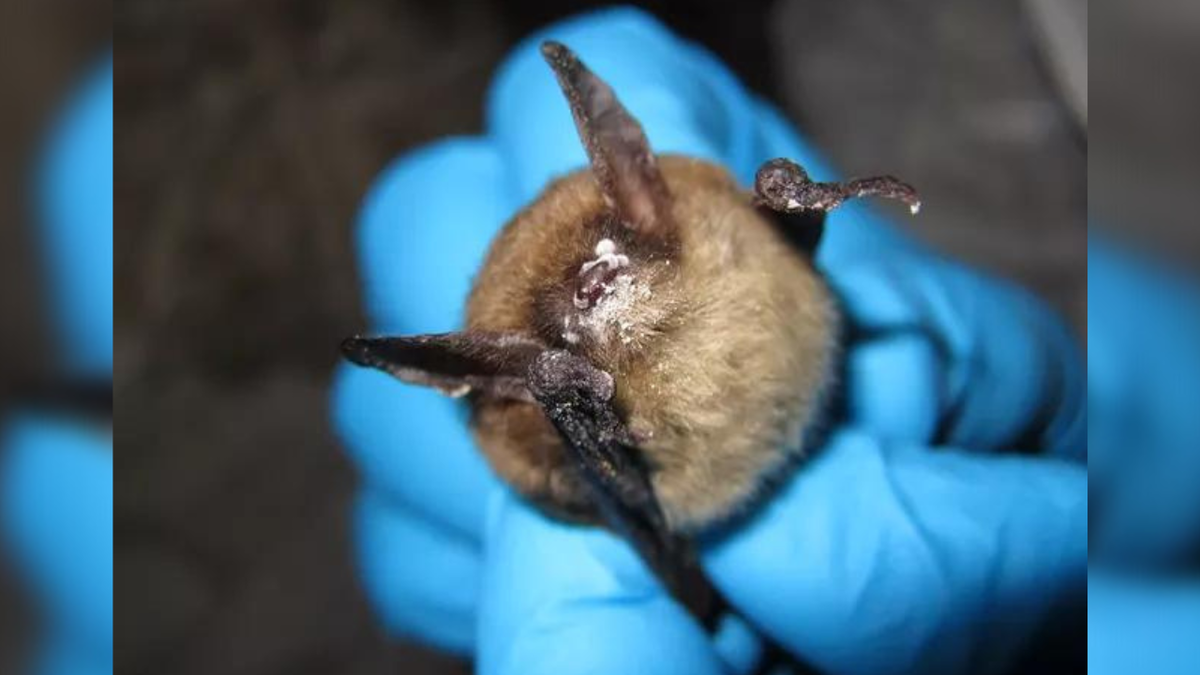Colorado’s first confirmed case of the deadly white-nose syndrome found in Otero County bat

OTERO COUNTY, Colo. (KRDO) -- Colorado has its first confirmed case of white-nose syndrome, a disease that's killed millions of bats in North America.
According to the Colorado Parks and Wildlife, the bat - an adult female Yuma Bat (Myotis yumanensis) - was found on March 29 by National Park Service (NPS) staff at Bent's Old Fort National Historic Site in Otery County just outside La Junta.
The bat was euthanized and sent to the U.S. Geological Survey (USGS) National Wildlife Health Center for testing. There, CPW said tests confirmed the bat had wing lesions characteristic of white-nose syndrome (WNS) and was positive for Pseudogymnoascus destructans (Pd), the fungus that causes the disease.
According to CPW, WNS affects hibernating bats and often results in death before or shortly after they emerge from hibernation in the spring.
According to CPW, USGS researchers detected the presence of the fungus on a Yuma bat at Bent's Old Fort during a disease surveillance study funded by NPS in the summer of 2022. However, none of the 25 bats captured at that time had signs of WNS.
The fungus was also found at three other sites in Colorado last year; Baca, Larimer, and Rutt counties.
“After the discovery of Pd last year, we expected this news was inevitable in a year or two, given the experience in other states as white-nose syndrome has spread westward,” said Tina Jackson, CPW Species Conservation Coordinator, in a press release. “We’ve been monitoring for the fungus for a number of years and this is the same pattern seen in other states.”
CPW said the impact of the disease in Colorado could be devastating. Of the 19 bat species native to Colorado, at least 13 are susceptible to WNS. Any large-scale loss of bats would spell trouble for the health of Colorado's ecosystems and economy. According to CPW, it's estimated bats contribute $3 billion annually to the U.S. agricultural economy through pest control.
Jackson said CPW will continue to study bats statewide with additional surveys planned this year in collaboration with partners to assess the spread of WNS and its impact on the native bats of Colorado.
CPW said WNS was first documented in New York state in 2006. Since then, it's been confirmed in 12 North American bat species, and with the addition of Colorado, it now occurs in 39 states and seven Canadian provinces.
To see a map of where WNS is now, click here.
According to officials, the fungus does not infect humans and pets. Bats are the primary way the fungus spreads. However, CPW said the fungus can be transported on gear and clothing that's been in contact with contaminated environments - such as caves.
CPW said state and federal agencies in Colorado and throughout the U.S. ask that outdoors enthusiasts help by following these recommendations:
- Stay out of closed caves and mines.
- Decontaminate footwear and all caving gear before and after visiting or touring caves and other places where bats live.
- Do not touch bats. Report dead or sick ones to CPW by calling 303-291-7771 or emailing wildlife.batline@state.co.us.
- Gear and clothing used in areas where Pd or WNS occurs should not be used in areas where Pd is not known to occur. White-Nose Syndrome (whitenosesyndrome.org)
- To avoid accidentally transporting bats, check canopies, umbrellas, and other outdoor items for any bats that may have roosted in a nook or cranny.
Visit CPW’s website for more information on WNS.
See the full range of national decontamination guidance for the U.S. at by clicking here.
